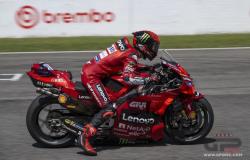Share this article
Advertising
While there has recently been the introduction of innovative electric and totally ecological buses in Trentino (the first races start on Wednesday) numerous problems seem to emerge related to these vehicles and their sustainability.
“Everyone in great pomp to celebrate “innovation”, which, after the brief and disastrous parenthesis of a few decades ago which saw Trentino’s main public transport company as protagonist in a failed project for the purchase of electric and hybrid vehicles (the famous “Pollicini” of ancient memory, some of these parked until a few hours ago inside the warehouse in via Innsbruck) today leads to the celebration the commissioning of futuristic vehicles, 100% electric and “totally ecological.”
Not to mention the failed hydrogen bus project with an outlay of around 9 million euros, a project that sadly lapsed in the most deafening silence, with the vehicles being stored in company depots after a grand presentation in 2013 on the occasion of the Trento Universiade. But this is another sad chapter in a book that is constantly being republished.” A statement from OR.SA Trasporti thunders signed by the Secretary Roberto Pedrotti.
Advertising
The note focuses on the batteries that power electric vehicles, which they would pose serious environmental and social problems.
“Returning to the main topic, it is sad and astonishing that no one is wondering (since there are plenty of programs and investigations into such disastrous projects) what is the method of producing batteries to run electric vehicles and don’t be indignant if in Indonesia, the largest producer of nickel, this frenzied extraction has made the air so polluted as to make it totally unbreathable, with the serious and well-known consequences of the case and which the flora and fauna of the sea have been completely destroyed with the consequent impossibility of fishing, the main livelihood activity for that population.
Given the surge in recent years on the demand for raw materials for the production of batteries and accessories for the production of the famous charging stationswhich require minerals such as Cobalt, Nickel, Lithium, and since the producing countries are unable to satisfy this ever-increasing demand, the workers of these factories are often laid off until the necessary supplies arrive .
70% of cobalt extraction takes place in the south of the Democratic Republic of Congo where, in inhumane and deplorable conditionsare often exploited to the point of exhaustion, using them to extract this mineral with bare hands and making them work for up to 16 hours a day, children of all ages. The dust resulting from this extraction makes the air so polluted that it causes dramatic increases in cases of lung diseases and congenital birth defects.
Most lithium mining occurs in Chile and we all know the critical issues of this country, but to make clear the gravity of all this, just think that to extract one ton of lithium, necessary to produce batteries for 100 vehicles, 2 million liters of water are needed and this has determined that many inhabitants neighboring the extraction area have had to emigrate to other areas as they no longer have access to drinking water.
Even Mongolia is not exempt from this inexorable but rapid environmental destruction caused above all by the total lack of controls that allow the disposal of toxic waste everywhere, especially in the surrounding waters.” we read, regarding foreign states.
In the Trentino context, concerns arise among the workers themselves. Drivers, often without adequate training, are tasked with charging vehicles without receiving any specific compensation, increasing the risk of accidents.
Training for technical staff would be expected but not paidand the driver shortage is consequently not adequately addressed.
“Coming to the reality of Trentino, it must be said that the workers themselves, who will be employed on the vehicles, do not hide a certain and well-founded concern but this feeling seems to go unnoticed and says nothing.
But there is more: the task of charging the vehicle – required of drivers without the necessary technical training – will not even be paid with a specific allowance, as required by law, with consequent waste of time, energy and the underlying risk of critical issues, accidents and injuries.
Given the pathological shortage of drivers, they will be placed in the new service, without any ad hoc training, when it is clear that this is essential. Not only that: the mechanics and staff employed in the workshop will undergo a training course, but without any expected remuneration.
What appears to be a surreal context represents – unfortunately – the current state of things; but in the front row we see promises, slogans and proclamations about these futuristic means, which only time will testify whether they are true or not. Nobody asks themselves the question of who will actually drive them, given that every month, on average, 3/4 drivers resign in Trentino Transport, but even in this case those in charge ignore all this and don’t ask any questions, don’t think to make this work ambitious and dignified again but, so be it!
Behind the 100% electric logo lie dramatic situationsinhumane and of terror but no one asks how sustainable the supply chain of electric vehicles and batteries really is, it turns out that between deforestation, villages forcefully evicted, refining waste ending up in the water, workers burned alive, even the green revolution, as all the revolutions, it’s not a gala dinner.” concludes the note.
Despite the promises and proclamations, behind the “100% electric” logo serious human and environmental problems would therefore be hidden.
The real sustainability of the electric bus supply chain remains highly questionable, with serious social and environmental consequences that cast doubt on the real effectiveness of this green revolution.







